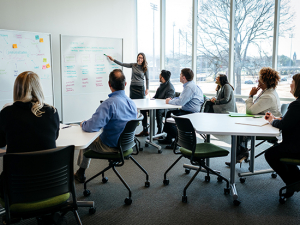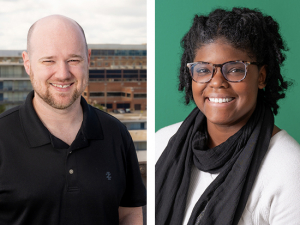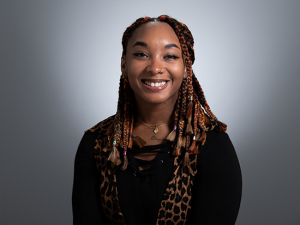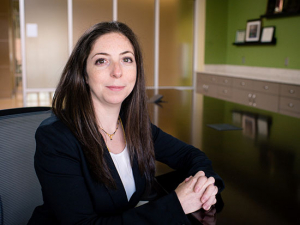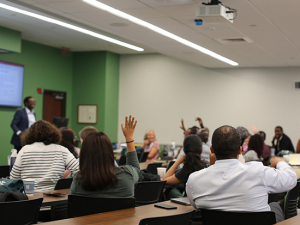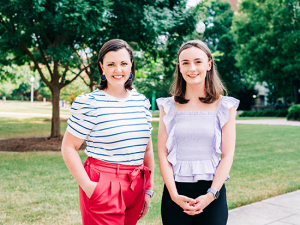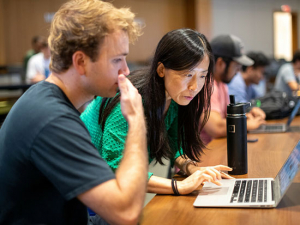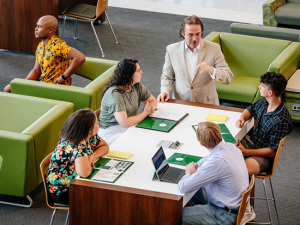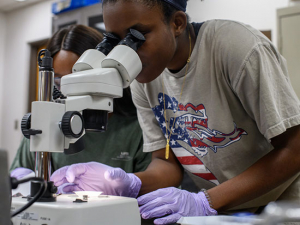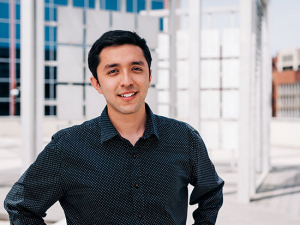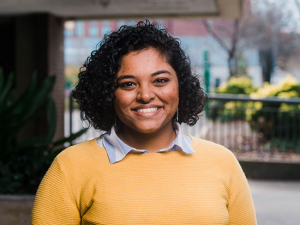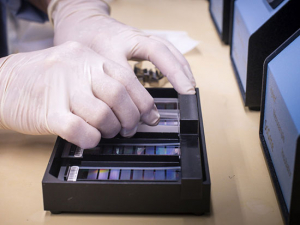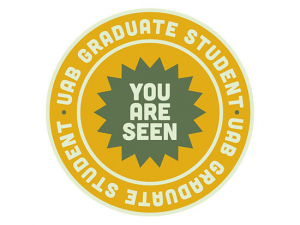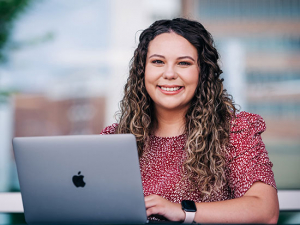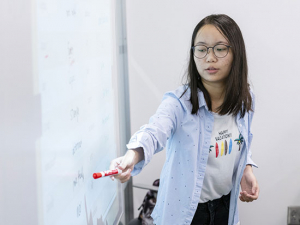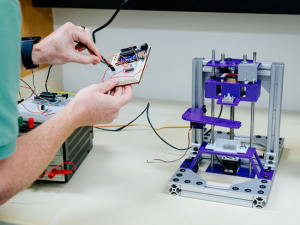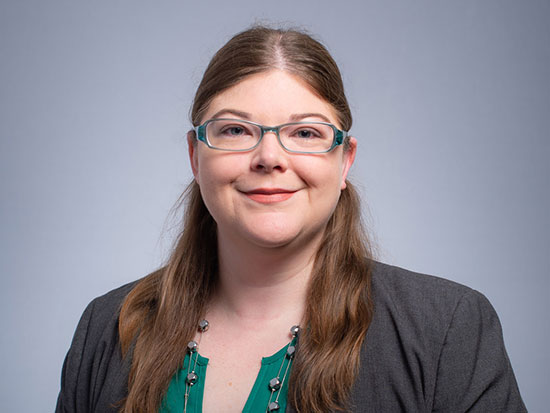 Glimpse into the future: Mary Kathryn Sewell-Loftin, Ph.D., is teaching a course on gene editing and engineering as part of a series of new courses for medical students launched by the Department of Biomedical Engineering.A few years from now, the power of gene-editing techniques such as CRISPR might allow doctors to treat, even cure, everything from HIV and leukemia to sickle cell anemia. “There are dozens of such studies that are in various stages,” said Mary Kathryn Sewell-Loftin, Ph.D., assistant professor in the Department of Biomedical Engineering. The promise is clear, even if the exact timeline on when these new treatments will reach the clinic is not.
Glimpse into the future: Mary Kathryn Sewell-Loftin, Ph.D., is teaching a course on gene editing and engineering as part of a series of new courses for medical students launched by the Department of Biomedical Engineering.A few years from now, the power of gene-editing techniques such as CRISPR might allow doctors to treat, even cure, everything from HIV and leukemia to sickle cell anemia. “There are dozens of such studies that are in various stages,” said Mary Kathryn Sewell-Loftin, Ph.D., assistant professor in the Department of Biomedical Engineering. The promise is clear, even if the exact timeline on when these new treatments will reach the clinic is not.
But the doctors who will be using these future therapies — today’s medical students — do not want to wait to learn more about cutting-edge technologies such as gene editing, machine learning and regenerative medicine. This is why the Department of Biomedical Engineering has launched a new series of co-enrolled courses for undergraduate medical students. (Biomedical engineering is a joint department of the School of Engineering and the School of Medicine.)
Not just know-how — understanding
“The technology in our labs today becomes tomorrow’s standard practice in the clinic,” said Palaniappan Sethu, Ph.D., professor of medicine and biomedical engineering at UAB, who led the development of the new courses in partnership with Mike Belue, program manager in the School of Medicine’s Office of Undergraduate Medical Education. “To be at the forefront of your specialty, it’s not enough to just know how to use technology, but to understand it, to contribute to new innovations and new developments, to learn the science behind the technologies, and to become familiar with pathways to commercializing new ideas and inventions.”
Sewell-Loftin’s course, Gene Editing and Engineering, is one of two co-enrolled courses that launched this fall. (A third course, Entrepreneurship in Medicine, will be offered in spring 2022.) The other fall course is Biomedical Device Design and Commercialization, taught by Professor Alan Eberhardt, Ph.D., and modeled on his existing course for senior BME majors. “It’s all about team design,” Eberhardt said. Students find a “client” in the hospital with a health care need that is “close to their heart,” said Eberhardt, and develop a candidate device to solve that need, along with a business model and commercialization strategy.
“Medical students have firsthand knowledge of clinical problems that need solving,” Sethu said. “In this course, they learn how engineers go about solving problems and understand the challenges that come up along the way if you are intending to take your solution to market.”
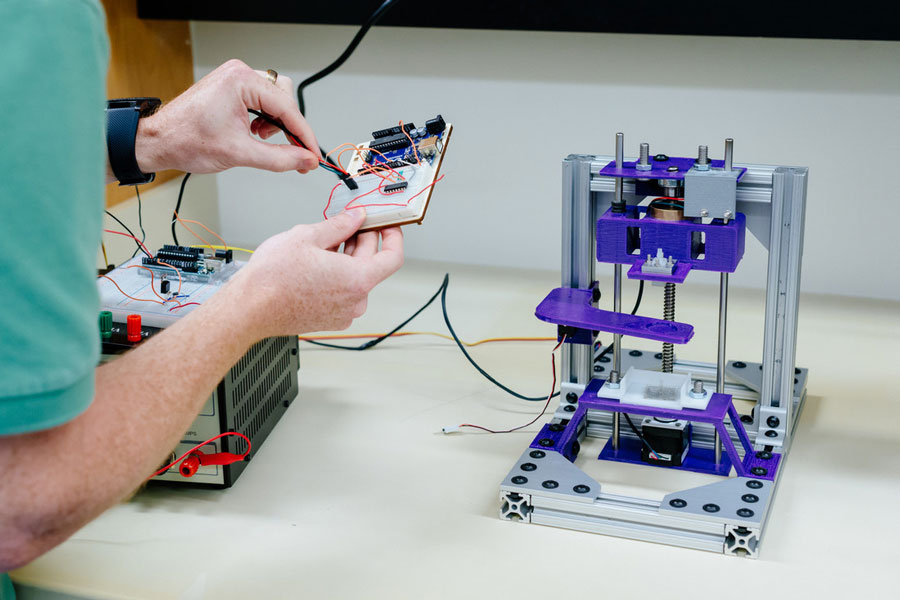 A graduate student in the Department of Biomedical Engineering demonstrates a scaffold-free bioprinter capable of creating tissue-like structures. Photo: ANDREA MABRY / University Relations
A graduate student in the Department of Biomedical Engineering demonstrates a scaffold-free bioprinter capable of creating tissue-like structures. Photo: ANDREA MABRY / University Relations
Technology and ethics
In her lab, Sewell-Loftin studies cancer growth with the goal of creating new anti-tumor treatment strategies. In her class, she is giving medical students an overview of several gene-editing techniques, including CRISPR and two older but still much-used strategies: Zinc-finger nucleases and TALENs. “These three techniques use similar ideas but different approaches at targeting specific regions of DNA to edit,” she said. “We’ve probably spent the most time talking about CRISPR in class” this semester, she added. “This is partially because it is the newest and has some interesting features that separate it from Zinc-finger nucleases and TALENs.”
“To be at the forefront of your specialty, it’s not enough to just know how to use technology, but to understand it, to contribute to new innovations and new developments, to learn the science behind the technologies, and to become familiar with pathways to commercializing new ideas and inventions.”
— Palaniappan Sethu, Ph.D., professor of medicine and biomedical engineering
What her students are most interested in, however, is “learning how these editing practices may apply clinically,” Sewell-Loftin said. “We’ve had great discussions comparing and contrasting approaches to targeting different diseases.” She and her students also are exploring the ethical cans of worms opened up by gene-editing therapies. Sewell-Loftin is discussing the types of diseases that are candidates for gene-editing therapies, the alternative treatment strategies for these diseases, the patient populations that would receive them (children or adults), and the long-term or off-target side effects that need to be understood and explained to patients receiving these therapies.
Sewell-Loftin has selected a few case studies to begin the term, “including the He case from 2018 involving CRISPR to prevent HIV infections in newborns,” she said. “This is probably the most infamous case of gene editing in the clinic we have currently.” After that, “I’ve decided to let the students pick which case studies interest them most,” Sewell-Loftin said. “I can’t wait to see what they bring to class.”
Neither can Jay Zhang, M.D., Ph.D., chair of the Department of Biomedical Engineering. “We are so excited to give our star faculty a chance to bring cutting-edge technologies to UAB medical students,” Zhang said. “This is a great opportunity. We designed these courses to prepare medical students to be a part of the fourth industrial revolution, where the boundaries between the digital world and the physical world, including biology, are going away.”
Co-enrolled courses at the School of Medicine
School of Medicine students can choose from seven co-enrolled courses in fall 2021, the most ever, says Mike Belue, program manager in the School of Medicine’s Office of Undergraduate Medical Education. These courses are taught by faculty in the school’s departments of pathology, medical education and family medicine, in addition to biomedical engineering. (Students also can design their own electives or special topics courses.) Co-enrolled courses are open to students at any time throughout their four years of undergraduate medical training at UAB.
